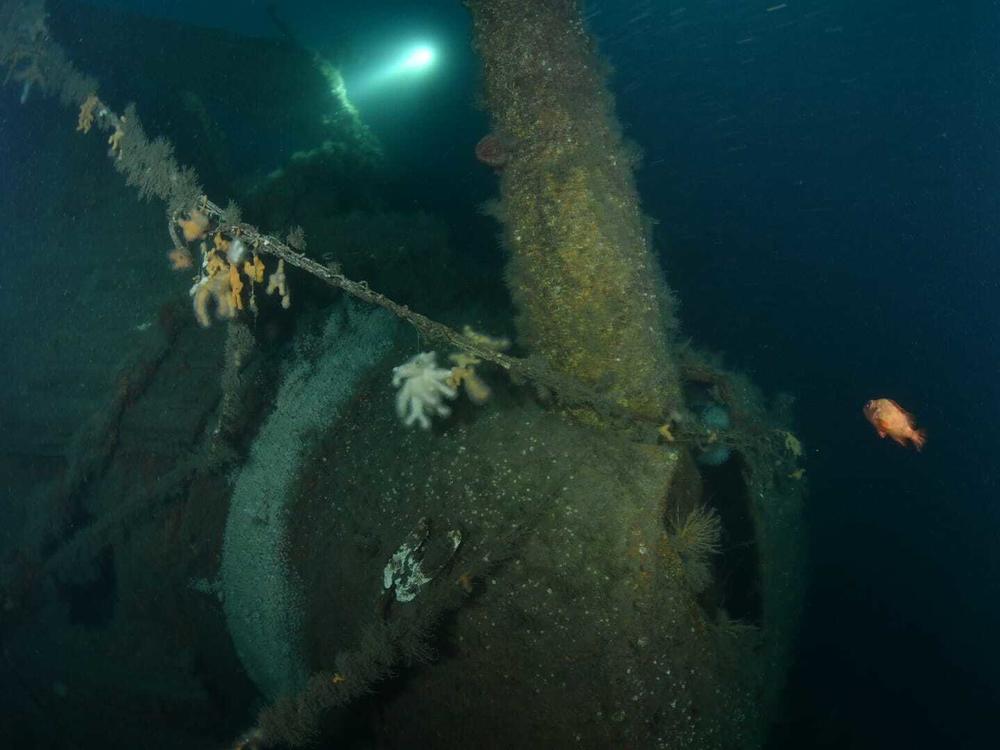Section Branding
Header Content
Explorers say they’ve found a British warship sunk by a German U-boat in WWI
Primary Content
Explorers say they’ve found the wreckage of a British warship that was sunk by a German U-boat during World War I.
Some 524 people, including the ship’s captain, perished when the HMS Hawke went down in the North Sea off the eastern coast of Scotland on Oct. 15, 1914. Seventy crew members survived.
“It’s a big loss of life,” said Kevin Heath, who co-founded the website Lost in Waters Deep, which chronicles naval losses around Scotland by the United Kingdom’s Royal Navy and other countries during the conflict. “She’s a big ship. And it’s one of the first ships lost in World War I.”
A shipwreck hunter, Heath said he found a map in an old German logbook that pointed him to where the sunken vessel could be located, roughly 70 miles east of Fraserburgh.
The nearly 400-foot ship had been taking part in the Allied blockade of Germany when it was torpedoed and sunk in the early days of World War I.
Earlier this month, Heath teamed up with a group of divers called the Gasperados and set out on the dive vessel Clasina in search of the Hawke. While the divers descended more than 350 feet below sea level, Heath waited on the boat.
“We’re sitting there waiting, waiting, waiting. Excited. You know, are they going to say, ‘oh it is a rock’ or ‘it’s not the Hawke’?” he said. “They all come up and say, ‘yeah, there are guns everywhere and the wreck is in very, very good condition.’ ”
Some of the wood on the deck was still intact, the divers recounted. The team quickly reported the discovery to the U.K. Hydrographic Office and the Royal Navy, which Heath hopes will give the site a protected status.
“We appreciate the efforts to locate the wreck of HMS Hawke (1891),” a Royal Navy spokesperson said in a statement. “Once the evidence to support this find is received, it will enable our historians to formally identify the wreck.”
Heath said he’ll write about the history of the Hawke as well as profiles of the victims for his website in the coming weeks. After the BBC published a story about the discovery, he said he received around 30 emails from family members of sailors who died on the ship, telling their stories and sharing photographs.
Heath said he’ll also continue to search for other wrecks, though he counts the discovery of the Hawke as one of his more noteworthy finds.
“We’ve got a few wrecks that we’re still looking for,” he said. “I don’t think anything will top finding the HMS Hawke. There’s nothing like that to find now in Scotland."


